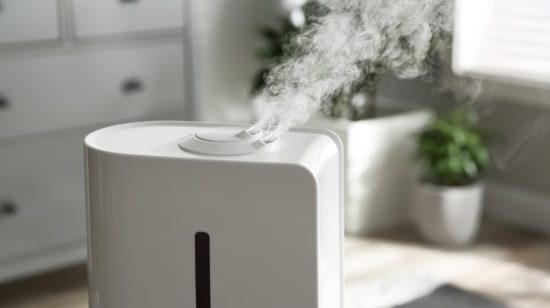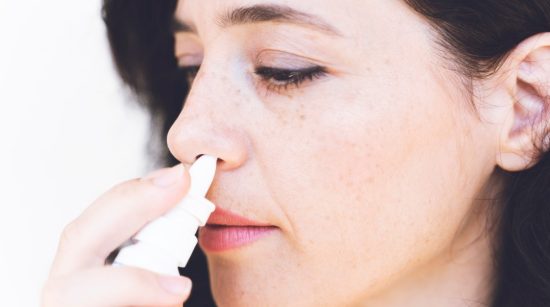Are you tired of struggling to breathe through a congested nose? We’ve all been there – the frustrating feeling of a blocked nose can be incredibly uncomfortable and disruptive. Whether it’s due to allergies, a cold, or sinusitis, finding relief is crucial for your overall well-being.
In this article, we will explore effective strategies on how to get rid of a blocked nose so that you can breathe freely once again! Say goodbye to stuffy noses and hello to clear nasal passages with these simple yet powerful techniques. So, let’s dive in and discover the secrets to unblocking your nose naturally!
What Causes a Blocked Nose?

- Common Cold or Flu: Increased mucus production during sickness can cause nasal passages to become congested.
- Allergies: Hay fever, pet dander, or dust mites can trigger inflammation in the nasal lining, leading to congestion.
- Sinusitis: Inflammation and fluid buildup in the sinuses, often due to infection or allergies, can result in a stuffy nose.
- Environmental Factors: Dry air lacking moisture can dry out nasal passages, making them more susceptible to congestion.
- Medications: Certain drugs, like decongestants and blood pressure medications, may have side effects that contribute to nasal congestion.
How to Get Rid of a Blocked Nose?
1. Steam Inhalation

Inhaling steam, a time-tested remedy proves highly effective in easing a blocked nose. By loosening mucus and clearing nasal passages, steam inhalation offers rapid relief. To incorporate this method into your routine, fill a bowl with hot water, add a few drops of essential oil if desired, and create a tent-like effect by placing a towel over your head.
Caution is crucial to prevent burns, and inhaling deeply through your nose for 5-10 minutes can provide noticeable relief. This natural approach is not only easy to implement but also helps avoid reliance on medications.
2. Use a Humidifier

Employing a humidifier emerges as a valuable strategy to alleviate a blocked nose. Dry air exacerbates nasal congestion, and a humidifier addresses this by releasing water vapour, increasing indoor humidity levels. Regular maintenance and adherence to cleaning instructions prevent the growth of harmful bacteria and mould.
It’s imperative to strike a balance, maintaining humidity levels between 30-50%, as excessive humidity can foster allergens. Incorporating a humidifier into your daily environment, especially during sleep, ensures consistent relief from nasal congestion.
3. Saline Nasal Irrigation

Saline nasal irrigation, a technique involving flushing nasal passages with a saline solution, stands out as a powerful method to alleviate a blocked nose. Utilizing a neti pot or squeeze bottle filled with warm distilled water and salt, this practice moisturizes nasal passages, reduces inflammation, and aids in clearing mucus.
However, it is crucial to use sterile equipment and follow proper techniques to avoid potential risks. This natural and low-cost approach proves particularly beneficial for those experiencing congestion due to allergies, colds, or sinus issues.
4. Stay Hydrated

The importance of staying hydrated becomes evident when combating a blocked nose. Consuming warm liquids such as herbal teas or soups not only provides hydration but also soothes inflammation in nasal passages. Additionally, using a humidifier helps counteract dry air, a common aggravator of nasal congestion.
Increasing overall water intake throughout the day is a fundamental practice, as adequate hydration thins out the mucus and facilitates toxin removal. Prioritizing hydration through various means contributes significantly to managing a blocked nose and supporting overall respiratory health.
5. Take a Hot Shower

A simple yet effective method for relieving a blocked nose involves taking a hot shower. The steam generated in the shower serves to loosen up mucus, providing immediate relief from congestion. Stepping into a hot shower creates a mini steam room in your bathroom, and inhaling the moist air helps reduce inflammation in the sinuses and opens up congested airways.
This method not only offers short-term relief but also contributes to overall respiratory health by soothing dry nasal passages and moisturizing irritated tissues. At the same time, a hot shower provides quick comfort and persistent or severe congestion warrants consultation with a healthcare professional for appropriate long-term solutions.
6. Use a Warm Compress

Alleviating a blocked nose can be as simple as using a warm compress. Soak a clean towel in warm water, wring out excess water, and place it on your face over the sinuses for 5-10 minutes. The warmth helps soothe inflamed tissues, loosens mucus, and promotes better blood circulation. This safe and natural remedy can be repeated throughout the day for relief. Ensure the temperature is comfortable for your skin, and consult with your doctor if you have sensitive skin or underlying medical conditions.
7. Decongestant Tablets and Liquids

Decongestant tablets and liquids offer swift relief by shrinking blood vessels in nasal passages, reducing inflammation and congestion. Carefully read labels for ingredients like pseudoephedrine and phenylephrine, and follow recommended dosages. However, those with certain medical conditions, like high blood pressure, should consult a healthcare provider before use. Limit usage to avoid rebound congestion, and consult a professional if concerns arise.
8. Use a Saline Spray

An effective and natural solution for a blocked nose is using a saline spray. Composed of a saltwater solution, it moisturizes nasal passages, reduces inflammation, and thins out mucus. Gently tilt your head forward, insert the nozzle into one nostril, and squeeze as you breathe in. Repeat for the other nostril. While safe for multiple uses, avoid excessive spraying to prevent worsening congestion. Unlike instant relief, consistent use over a few days brings noticeable improvements.
9. Nasal Wash

Nasal wash, or nasal irrigation, proves highly effective in clearing a blocked nose. Using a neti pot or squeeze bottle with a saline solution, this method flushes out excess mucus and irritants. Tilt your head over a sink, gently insert the spout into one nostril, and pour the solution in, letting it flow out the other nostril. Proper technique is crucial, using only sterile water. Perform nasal washes once or twice daily until congestion improves, promoting sinus health.
10. Nasal Sprays

Nasal sprays are a popular and quick solution for a blocked nose. By shrinking blood vessels, they reduce inflammation and congestion. Follow instructions carefully, aiming the spray away from your nose’s centre towards the side wall. Inhale gently and avoid immediate nose blowing. Overusing nasal sprays can lead to dependency or rebound congestion, so adhere to recommended dosages.
Consult a healthcare professional for chronic sinus issues or uncertainties about nasal spray use. Explore alternative remedies to alleviate a blocked nose effectively without causing dependency or rebound congestion.
Tips to Prevent Blocked Nose
- Keep your environment clean: Regularly dust and vacuum your living space to minimize allergens and irritants that can cause a blocked nose.
- Maintain good hygiene: Wash your hands frequently, especially during cold and flu season, to prevent the spread of respiratory viruses.
- Use a humidifier: Adding moisture to the air can help keep nasal passages moist, reducing the risk of congestion.
- Stay hydrated: Drink plenty of fluids throughout the day to thin mucus secretions and prevent them from becoming thick and clogging nasal passages.
- Avoid triggers: If you know certain substances or activities trigger your nasal congestion, such as cigarette smoke or strong odours, try to avoid them whenever possible.
- Exercise regularly: Physical activity improves blood circulation and helps clear out mucus from your airways, reducing the chances of getting a blocked nose.
- Manage allergies effectively: If you have allergies, work with an allergist to identify triggers and develop an appropriate treatment plan using medications or allergy shots.
Remember that prevention is key to maintaining clear nasal passages and preventing a blocked nose. By following these simple tips, you can reduce the frequency and severity of this annoying condition.
Conclusion
In conclusion, there are several effective methods for getting rid of a blocked nose. From using steam and nasal irrigation to taking over-the-counter medication and staying hydrated, these simple techniques can provide quick relief from congestion. It is important also to address the underlying causes of a blocked nose, such as allergies or sinus infections, in order to prevent future occurrences. With patience and consistency in practising these remedies, you can effectively clear your congested nose and breathe easier once again.
FAQs – How to Get Rid of a Blocked Nose?
How can I unblock my nose quickly?
To quickly unblock your nose, you can use a saline nasal spray, performing nasal irrigation with a neti pot or squeeze bottle, using a humidifier or steam inhalation, applying a warm compress to your face, or taking over-the-counter decongestants. However, it’s important to read and follow instructions carefully and consult a healthcare professional if the congestion persists.
Is it better to sleep in a cold or warm room with a stuffy nose?
Sleeping in a slightly cooler room can help ease the discomfort of a stuffy nose. A cool room can help reduce inflammation and swelling in the nasal passages, making breathing easier. However, maintaining a comfortable temperature is key, so experiment to find what works best for you.
How long does a blocked nose last?
The duration of a blocked nose can vary depending on the cause. It may last anywhere from a few days to a couple of weeks. Common causes include colds, allergies, sinus infections, or irritants. If the symptoms persist beyond two weeks or worsen, it’s advisable to consult a healthcare professional for further evaluation.
Why can’t I breathe through my nose?
Difficulty breathing through the nose can be caused by several factors, including congestion due to colds or allergies, deviated septum, sinus infections, nasal polyps, or structural abnormalities. It’s best to consult a healthcare professional to determine the underlying cause and receive appropriate treatment.
Which side should I sleep on with a stuffy nose?
When dealing with a stuffy nose, sleeping on your side, especially the left side, can help alleviate congestion. This position promotes better drainage by utilizing gravity to allow mucus to flow more freely from the nasal passages. However, individual preferences may vary, so find the most comfortable position for yourself.

